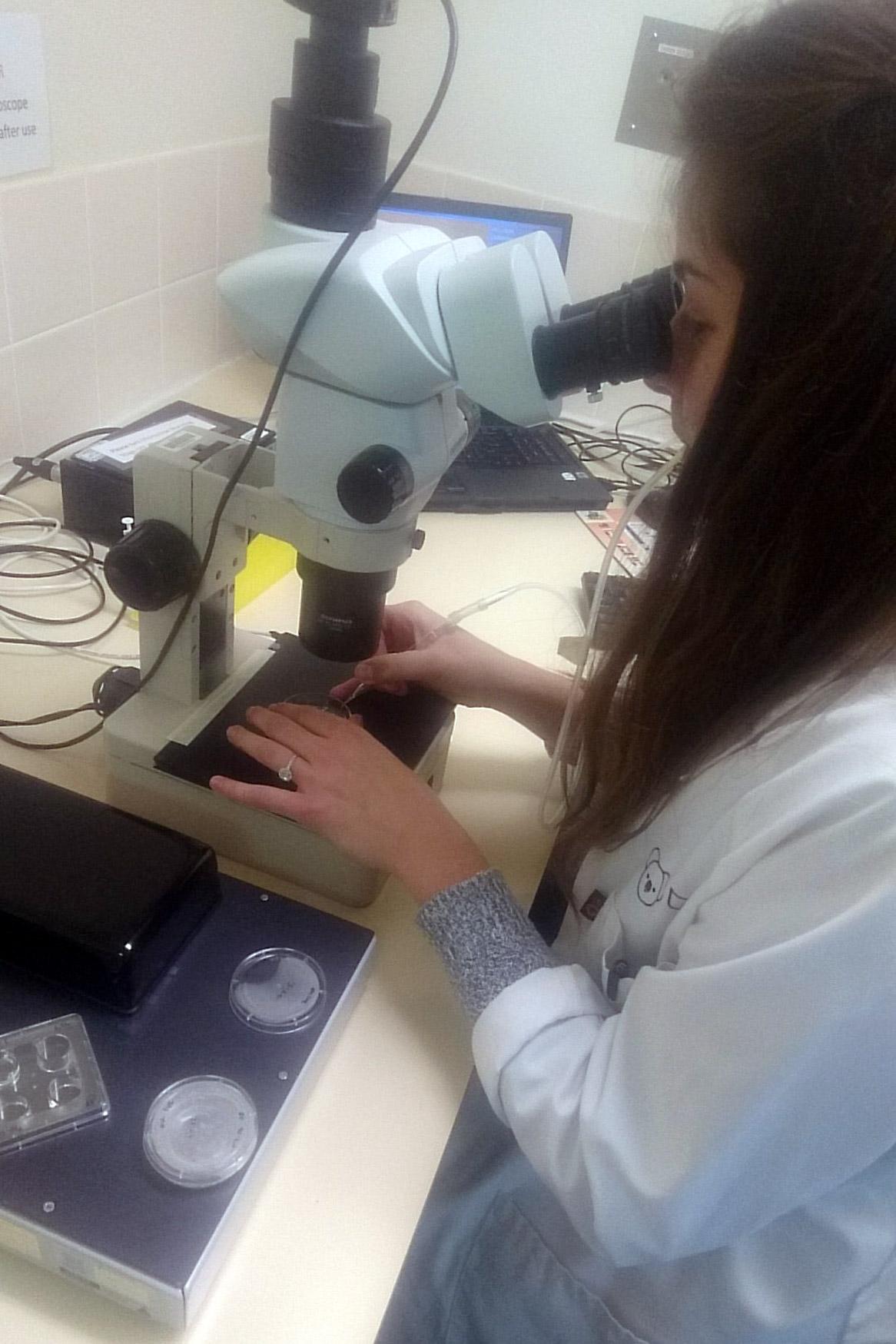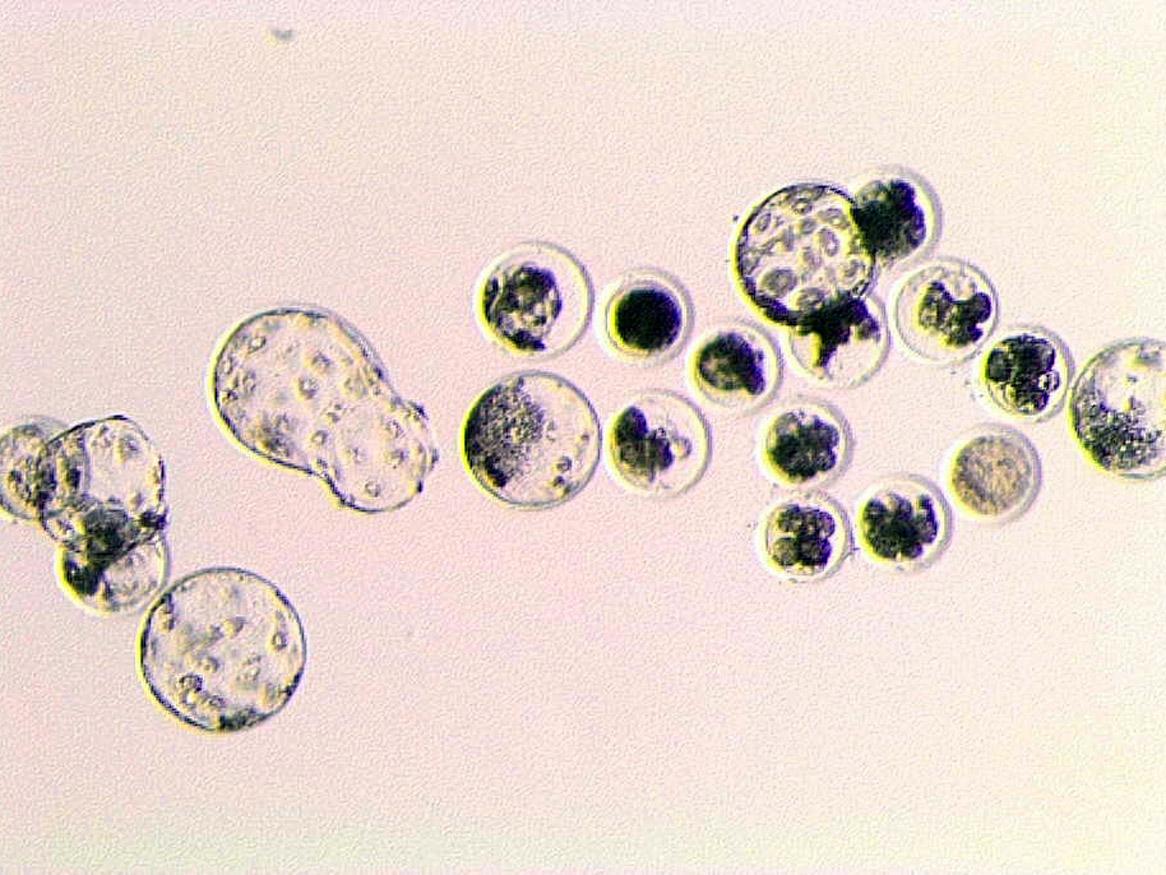How can assisted technologies be used to improve herd reproductive potential?

This project is being led by Jamee Daly from the School of Animal and Veterinary Sciences.
Case study: Anti-Müllerian Hormone as a predictive marker of fertility in cattle and sheep.
Variation in cow and ewe fertility profoundly influences the reproductive efficiency of herds/flocks and the success of embryo collection and transfer programs. Circulating anti-Müllerian hormone (AMH) is an accurate, predictive marker of the ovarian response to, and embryo production following, superovulation protocols in cattle.
Previously, we have demonstrated that circulating AMH levels predict the number, and quality of embryos produced by Merino lambs in a JIVET program.
Jamee Daly (pictured) is currently completing a PhD focussing on utilising circulating AMH as a predictive marker of ewe fertility within commercial flocks and in vitro embryo collection programs.
This is a collaboration between the School of Animal and Veterinary Sciences and SARDI, and involves data collected at SARDI’s Turretfield Research Station, Roseworthy campus and two commercial NSW farms.
Alongside this, a collaborative project between the Davies Livestock Research Centre and Holbrook Vet Centre was conducted to determine the relationship between circulating AMH levels and embryo production for mixed age, Bos taurus (Wagyu) cows used as donors in repeated multiple ovulation embryo transfer (MOET) cycles.
Outcomes of sheep studies
Within Jamee’s work we have found plasma AMH concentrations at 5 months of age were higher (P<0.05) for singleton and twin-bearing ewes compared with non-lambing ewes (2.74± 0.23 and 3.34± 0.81 vs 1.26± 0.48 ng/ml, respectively).
A large-scale trial is currently being undertaken across to confirm this relationship within two large commercial flocks in New South Wales.
Jamee’s PhD has found distinct AMH profile and ovarian maturity differences between birth and 18 weeks of age between Merino and Suffolk ewe lambs. Understanding these differences may lead to breed specific cut off values and selection recommendations for the Australian sheep industry.
The in vitro aspects of Jamee’s PhD are ongoing, with both juvenile and mature in vitro fertilisation and embryo transfer (JIVET and MIVET, respectively) technologies being employed to better understand whether AMH has correlation to oocyte and embryo quality, thereby reflecting lambing success.
Preliminary in vitro studies investigating follicular fluid AMH concentrations determined animals retrospectively classified as having high AMH (17.9 – 19.25 ng/ml) produced more blastocysts from cleaved oocytes than lambs with low (0.5-10.8 ng/ml) or medium range (10.81-17.89 ng/ml) AMH.
Outcomes of cattle studies

Embryo development at multiple stages.
Retrospectively, AMH concentrations collected at oestrus synchronisation for 182 mixed age Waygu cattle, were divided into three groups: LOW, <416pg/ml; MED, 416 to 831.4 pg/ml; and, HIGH, >831.4 pg/ml and then correlated to embryo flush data.
There was a positive relationship (P < 0.001) between plasma AMH and average embryos / flush; with each 1 pg/ml increase in plasma AMH resulting in an additional 0.00125 ± 0.003 embryos per flush.
The mean number of embryos / flush was higher (P < 0.05) for cows with HIGH compared with LOW AMH (3.07 ± 0.46 versus 2.03 ± 0.31), with MED cows intermediate (2.82 ± 0.30).
The maximum number of embryos produced in a single flush was also higher (P < 0.05) for HIGH versus LOW cows (8.13 ± 1.24 versus 5.18 ± 0.79), with MED cows again intermediate (7.09 ± 0.74).
Summary
Jamee’s PhD has demonstrated that AMH levels at weaning are predictive of ewe fertility following their first mating with ongoing in vitro studies designed to understand the role of AMH as a predictive marker.
Additionally, even though retrospective data was used in the bovine study, it is suggested that a single measure of AMH may be sufficient to select or discard potential donors from inclusion in MOET programs, thus improving its efficiency and cost-effectiveness.
Contributors
Project lead
Jamee Daly
School of Animal and Veterinary Sciences
University of Adelaide
South Australian Research and Development Institute (SARDI)
- Dr Jen Kelly
